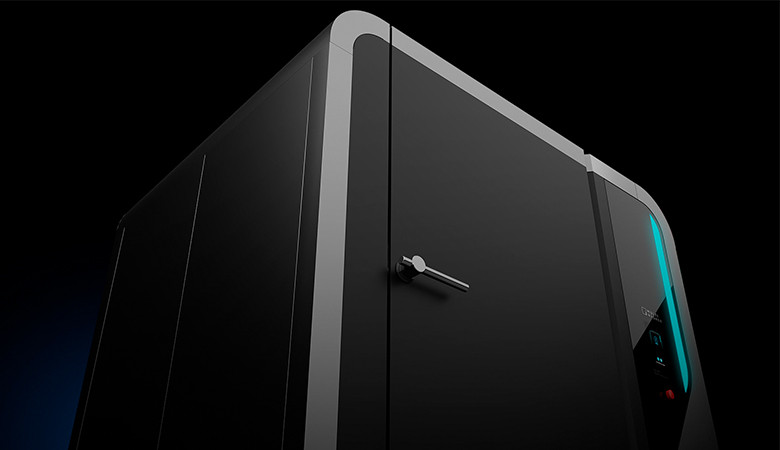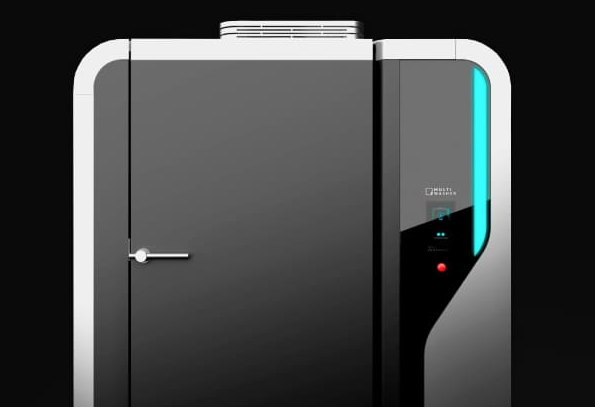Lavado industrial / Artículos
Sistemas de lavado: cómo aumentar la eficiencia
Un sistema de lavado eficaz tiene un impacto directo en los indicadores clave de gestión y puede suponer ahorros importantes. Descubre cómo conseguirlo.

 19 minutos de lectura
19 minutos de lectura
2022-02-17 15:00:00
Un sistema de lavado completo y robusto es fundamental para garantizar que una empresa opera con altos niveles de calidad e higiene. Sin embargo, muchas empresas todavía no poseen una visión integrada de estos sistemas, incluyendo procesos, formación, estándares de trabajo, equipamientos y rutinas de mejora continua. Comprender la importancia de cada uno de estos elementos y cómo interactúan es crucial para desarrollar y mantener un sistema de lavado eficaz. Descubre qué constituye un sistema de lavado eficiente y cómo implementarlo de forma sostenible y continua.
¿Qué es un sistema de lavado?
Un sistema de lavado engloba un conjunto de procesos, equipamientos y tecnologías utilizados para limpiar herramientas, piezas, superficies o utensilios industriales. Este sistema está diseñado para dar respuesta a las necesidades específicas de diferentes sectores, donde la higiene y la limpieza son factores críticos de éxito.
Las máquinas de lavado industrial, como MultiWasher, están diseñadas para eliminar de manera efectiva diferentes tipos de suciedad, residuos y contaminantes como grasas, aceites, partículas sólidas, productos químicos y microorganismos que están presentes en los carros para la distribución de alimentos o en equipamientos de lavandería.
¿Qué debe incluir un sistema de lavado industrial?
Un sistema de lavado industrial debe incluir varios componentes y elementos para garantizar una limpieza eficiente y adecuada.
- Equipamientos de lavado especializados. Los equipamientos de lavado deben seleccionarse en función de las necesidades específicas de cada industria, el tipo de suciedad a eliminar y las características de los productos a lavar. A la hora de proyectar un sistema de lavado industrial, es importante considerar prácticas sostenibles y de eficiencia energética. Este es el caso de MultiWasher, que utiliza un sistema de reutilización de agua, de recuperación de calor y productos químicos más sostenibles, además de optimizar el consumo energético.
- Productos de limpieza. Elegir los productos de limpieza adecuados es fundamental para eliminar de forma eficaz los distintos tipos de suciedad y residuos. Es importante elegir productos químicos que sean seguros, eficaces y compatibles con los materiales que se van a lavar.
- Equipamientos de control y automatización. La automatización juega un papel clave en los sistemas de lavado industrial. Por ejemplo, el uso de sensores, temporizadores y sistemas de monitorización garantiza un control preciso de los procesos de lavado, la dosificación adecuada de productos químicos y la eficiencia operativa.
- Estructura y layout adecuados. Los sistemas de lavado industrial deben diseñarse con una distribución adecuada que facilite el flujo eficiente de trabajo. También es importante considerar el espacio disponible en las instalaciones.
- Procedimientos operativos estandarizados. Es esencial definir e implementar procedimientos estandarizados no solo para guiar a los empleados, en los pasos correctos de lavado, el uso de las máquinas, las dosis o el mantenimiento, sino también para garantizar el cumplimiento de la normativa vigente.
- Procedimientos de mantenimiento. Además de los procedimientos de limpieza, los sistemas de lavado industrial requieren una rutina de mantenimiento para garantizar el buen funcionamiento de las máquinas y el prolongamiento de su vida útil. Puede incluir la revisión regular de componentes, cambio de filtros, lubricación de piezas, verificación de fugas y un plan de mantenimiento preventivo.
¿Cuáles son las ventajas de contar con un sistema de lavado?
La implantación de un sistema de lavado industrial ofrece varias ventajas para las empresas.
1. Limpieza eficiente
Los sistemas de lavado industrial están diseñados para eliminar de forma eficaz la suciedad, los residuos y los elementos que puedan contaminar equipamientos, piezas y superficies. La combinación de equipos especializados, productos químicos de lavado y técnicas específicas da como resultado una limpieza más completa y eficiente que los métodos convencionales.
2. Mejora de la calidad del producto
Una limpieza adecuada es crucial para garantizar la calidad del producto final. Los sistemas de lavado industrial ayudan a eliminar impurezas, partículas no deseadas y bacterias que pueden afectar a la calidad y seguridad del producto. Esto es especialmente importante en sectores como la industria alimentaria y farmacéutica.
3. Cumplimento de la legislación vigente
La industria alimentaria, farmacéutica y sanitaria están sujetas a estrictas normas en materia de higiene, seguridad y medio ambiente. Un sistema de lavado industrial adecuado permite a las empresas cumplir con estos requisitos al mismo tiempo que garantiza el cumplimiento de la legislación vigente. Esto ayuda a prevenir problemas legales y proteger la reputación de la empresa.
4. Aumento de la productividad
Con un sistema de lavado eficiente, se reduce el tiempo necesario para realizar una correcta higienización. Esto da como resultado menos tiempo de inactividad, lo que permite una mayor capacidad de producción y un flujo de trabajo mejorado. Además, la automatización y optimización de los procesos de lavado ayudan a liberar recursos humanos para tareas más productivas.
5. Ahorro de recursos
Un sistema de lavado industrial bien diseñado y personalizado permite ahorrar recursos como agua, energía y productos químicos de lavado. Con el uso adecuado de los equipamientos, la dosificación correcta de los productos químicos y el control eficiente del consumo de agua y energía, las empresas pueden reducir los desechos y los costes operativos.
6. Mejora de la seguridad y el ambiente de trabajo
El lavado industrial también contribuye a un espacio de trabajo más seguro y saludable. La eliminación de residuos peligrosos reduce el riesgo de accidentes y enfermedades profesionales. Además, el cumplimiento de las prácticas de limpieza e higiene ayuda a crear un ambiente de trabajo más agradable y productivo.
¿Cómo crear un sistema de lavado e higiene efectivo?
Crear un sistema de lavado eficaz es complejo, ya que depende de los patógenos presentes, que determinan el equipamiento más adecuado, los productos de limpieza y los procedimientos a seguir. Además, también es necesario tener en cuenta el tipo de superficie, el nivel de contaminación y, por último, pero no menos importante, la formación de los empleados.
Estos son los pasos más importantes para crear un sistema de lavado eficaz:
1. Definir objetivos y métricas del sistema de lavado
El primer paso para crear un sistema de lavado eficaz es tener una visión clara de los objetivos a alcanzar y las métricas para evaluar el desempeño.
Qué hacer:
- Identificar necesidades. ¿Cuál es el objetivo principal del sistema de lavado? ¿Reducir costes? ¿Aumentar la eficiencia? ¿Garantizar la seguridad alimentaria? ¿Cumplir con la legislación del sector?
- Establecer objetivos claros. Define objetivos específicos, como reducir el tiempo del lavado en un 20%, disminuir el consumo de agua en un 15% o aumentar la eficiencia energética en un 10%.
- Definir las métricas de éxito. Elige los indicadores clave de rendimiento para monitorizar el progreso, por ejemplo, el tiempo medio de lavado, la cantidad de recursos consumidos (agua, energía y detergentes), la calidad de la limpieza y la frecuencia del mantenimiento requerido.
2. Mapear el sistema de lavado actual e identificar desperdicios
Evalúa el funcionamiento del sistema de lavado actual, inspeccionando los procesos existentes e identificando áreas de desperdicio e ineficiencia.
Qué hacer:
- Mapear el proceso actual. Registra los pasos del proceso de lavado, desde la preparación hasta su finalización. Incluye los equipamientos utilizados, productos químicos, tiempos de ciclo y procedimientos.
- Identificar desperdicios. Busca recursos desperdiciados como agua, energía y productos químicos, así como tiempos de inactividad innecesarios o procesos manuales. Utiliza herramientas como el diagrama de Ishikawa o el diagrama de Pareto.
3. Definir claramente los requisitos de lavado
El siguiente paso es definir los requisitos específicos del nuevo sistema de lavado, en base a las necesidades previamente identificadas.
Qué hacer:
- Determinar las necesidades de lavado. Especifica los tipos de suciedad y residuos que deben eliminarse y qué estándares de limpieza se requieren. Considera los diferentes tipos de materiales y superficies a lavar.
- Elegir equipamientos y tecnologías. Selecciona equipos y tecnologías que cumplan con los requisitos establecidos. MultiWasher es la elección de las marcas que quieren aumentar la eficacia y eficiencia de sus procesos de lavado.
4. Reducir la dependencia de detergentes y otros productos químicos
No existen detergentes ni productos químicos perfectos que sean eficaces contra todas las bacterias y virus, y que no tengan impacto en el medio ambiente y sean completamente seguros y fáciles de usar. Por ejemplo, el vapor de peróxido de hidrógeno no deja residuos, pero es caro, puede ser corrosivo y difícil de usar. Las soluciones de cloro son eficaces contra las esporas, pero tienen un olor fuerte, dejan residuos y pueden dañar las superficies. La luz ultravioleta tampoco deja residuos, pero no desinfecta zonas donde no puede brillar directamente.
Qué hacer:
- Adoptar tecnologías avanzadas. Considera el uso de tecnologías que reduzcan la necesidad de productos químicos, como sistemas de lavado a vapor o máquinas de alta presión que utilizan menos agua y productos químicos, como MultiWasher.
- Utilizar productos ecológicos. Sustituye los detergentes agresivos por alternativas ecológicas y biodegradables que sean menos dañinas para el medio ambiente y la salud humana.
- Implementar métodos de reutilización de agua. Opta por sistemas que reciclen y reutilicen el agua de lavado para reducir la cantidad de detergente necesaria. Con MultiWasher, el agua es tratada para ser utilizada en múltiples ciclos de lavado.
5. Definir claramente los roles y responsabilidades de cada empleado
Si las funciones y responsabilidades relacionadas con el lavado no están claramente definidas, es probable que no se realicen ciertas tareas de limpieza críticas. Además, las ausencias y la falta de personal, o la transferencia de responsabilidades entre compañeros, pueden complicar todavía más esta situación y provocar que no se lleve a cabo una limpieza esencial. Estos pequeños errores pueden comprometer todo el sistema.
Qué hacer:
- Asignar responsabilidades. Enumera las tareas que deben realizarse y atribuye responsabilidades específicas a cada miembro del equipo. Asegúrate de que todos comprenden sus funciones y lo importantes que son para garantizar el éxito.
- Crear estándares de trabajo simples y visuales. Crea estándares operativos que describan de manera simple y visual cómo se debe realizar cada tarea. Incluye instrucciones claras sobre el uso de maquinaria, productos químicos y protocolos de seguridad.
6. Invertir en automatización
Los procesos manuales pueden ser una solución inmediata, pero no pueden garantizar una limpieza constante y completa en todos los ciclos – un estudio detectó suciedad en el 50% de los casos tras una limpieza manual. Los sistemas de lavado automático, por otro lado, permiten garantizar una limpieza de alta calidad.
Qué hacer:
- Evaluar áreas que se pueden automatizar. Identifica las partes del proceso de lavado que se pueden automatizar, como, por ejemplo, la dosificación, el control de la temperatura, los ciclos de lavado y el aclarado o el secado. Con MultiWasher, todos estos pasos se pueden automatizar.
- Elegir la tecnología adecuada. Opta por máquinas de lavado industrial automatizadas, con sistemas de control de procesos, sensores y software de monitorización. Con MultiWasher incluso es posible medir la calidad del lavado gracias a los medidores de ATP. Estos pequeños dispositivos permiten detectar la presencia de microorganismos o residuos en cada superficie para evaluar objetivamente si el lavado es eficaz.
- Realizar pequeñas pruebas para ver qué funciona. Realizar pequeñas pruebas preliminares permite identificar qué funciona mejor y evitar grandes inversiones en procesos que pueden no ser efectivos.
7. Reconocer el riesgo de contaminación de objetos y herramientas
A menudo, los sistemas de lavado se centran en la limpieza de espacios, sin considerar las superficies y equipamientos que entran en contacto directo con las personas. Por este motivo, es importante reconocer y mitigar el riesgo de contaminación de objetos y herramientas.
Qué hacer:
- Identificar riesgos. Evalúa los tipos de objetos y herramientas utilizados en tu sector e identifica aquellos que tienen mayor probabilidad de estar contaminados con organismos patógenos. Los utensilios que entran en contacto directo con alimentos, pacientes o superficies que se tocan con frecuencia suponen un alto riesgo.
- Implementar métodos de monitorización. Utiliza indicadores biológicos o químicos para monitorizar la efectividad de los procesos de desinfección y garantizar que cumplen con los estándares de higiene.
- Formación del personal. Forma a los empleados para que reconozcan los riesgos de infección y sigan los protocolos de desinfección establecidos.
8. Analizar el impacto del sistema de lavado en otros procesos
Para ser eficaz, un sistema de lavado debe integrarse de forma armoniosa con los otros procesos y contribuir positivamente a la eficiencia general.
Qué hacer:
- Mapear procesos relacionados. Identifica los procesos que se ven afectados por el sistema de lavado. Puedes incluir, por ejemplo, producción, logística, mantenimiento o seguridad.
- Calcular interdependencia. Evalúa si la implantación del nuevo sistema de lavado facilita o dificulta los procesos. Por ejemplo, un sistema de lavado más rápido puede acelerar la producción, mientras que un sistema que consume mucha agua puede afectar a otros procesos que también dependen de este recurso.
9. Proporcionar formación al personal
Formar al personal de trabajo es esencial para el éxito de cualquier sistema de lavado. Garantizar que todos lo comprenden y están actualizados sobre los procedimientos puede marcar una gran diferencia en la eficacia y eficiencia del sistema.
Qué hacer:
- Identificar necesidades de formación. Evalúa áreas donde el personal necesita más conocimientos o habilidades.
- Desarrollar e implementar un plan de formación. Crea un plan de formación que aborde las necesidades identificadas. Temas como los procedimientos de lavado, el uso de equipos, la gestión de residuos y las prácticas de seguridad pueden ser cruciales.
10. Crear una cultura de mejora continua
Por último, pero no menos importante, crea una cultura de mejora continua para el éxito a largo plazo. Este tipo de cultura promueve una mentalidad de constante evolución y mejoría, garantizando que el sistema de lavado mantiene altos estándares y se adapta y mejora con el tiempo.
Qué hacer:
- Recopilar datos. Utiliza software y sensores que ayuden a monitorizar el rendimiento en tiempo real.
- Involucrar a todo el equipo. Anima a todos los miembros del equipo a participar activamente en el proceso de mejora. Crea un ambiente donde todos se sientan responsables y motivados para identificar áreas de mejora y proponer soluciones.
- Implementar y comprobar mejorías. Tras identificar mejoras potenciales, impleméntalas a pequeña escala y comprueba los resultados. Utiliza estas pruebas para validar su efectividad antes de una implementación más amplia.
- Evaluar y ajustar de forma continua. La mejora continua es un proceso sin fin. Evalúa periódicamente los resultados de los cambios implementados y ajusta según sea necesario para garantizar que el sistema de lavado continúe evolucionando y mejorando.
MultiWasher, el sistema de lavado adaptado a cualquier sector
MultiWasher es la solución ideal para empresas que necesitan un sistema de lavado eficiente y versátil, capaz de cubrir las demandas de cualquier sector. Desde la industria alimentaria hasta la logística, pasando por el sector retail, esta máquina consigue un lavado y desinfección completos en ciclos integrados, optimizando el proceso y ahorrando recursos. Contáctanos para una demostración personalizada y experimenta la eficiencia que solo MultiWasher puede ofrecer.
También le puede interesar

Lavado industrial / Artículos
Mucho más que IA: 5 grandes tendencias para el sector retail
Descubre las 5 grandes tendencias para el sector retail que todas las empresas deberían conocer, desde la Inteligencia Artificial hasta la sosten...
Publicado en 2024-01-03

Lavado industrial / Artículos
5 tendencias de Anuga 2024
Hemos estado en Anuga, una de las ferias de alimentación más grandes del mundo. Descubre las 5 principales tendencias que marcarán los próximos a...
Publicado en 2024-05-07























 Portugal
Portugal United Kingdom
United Kingdom United States
United States France
France Spain
Spain Germany
Germany Romania
Romania Italy
Italy Czech Republic
Czech Republic Finland
Finland Hungary
Hungary Slovakia
Slovakia Greece
Greece Lithuania
Lithuania South Korea
South Korea Russia
Russia Saudi Arabia
Saudi Arabia Poland
Poland Brasil
Brasil Hebrew
Hebrew